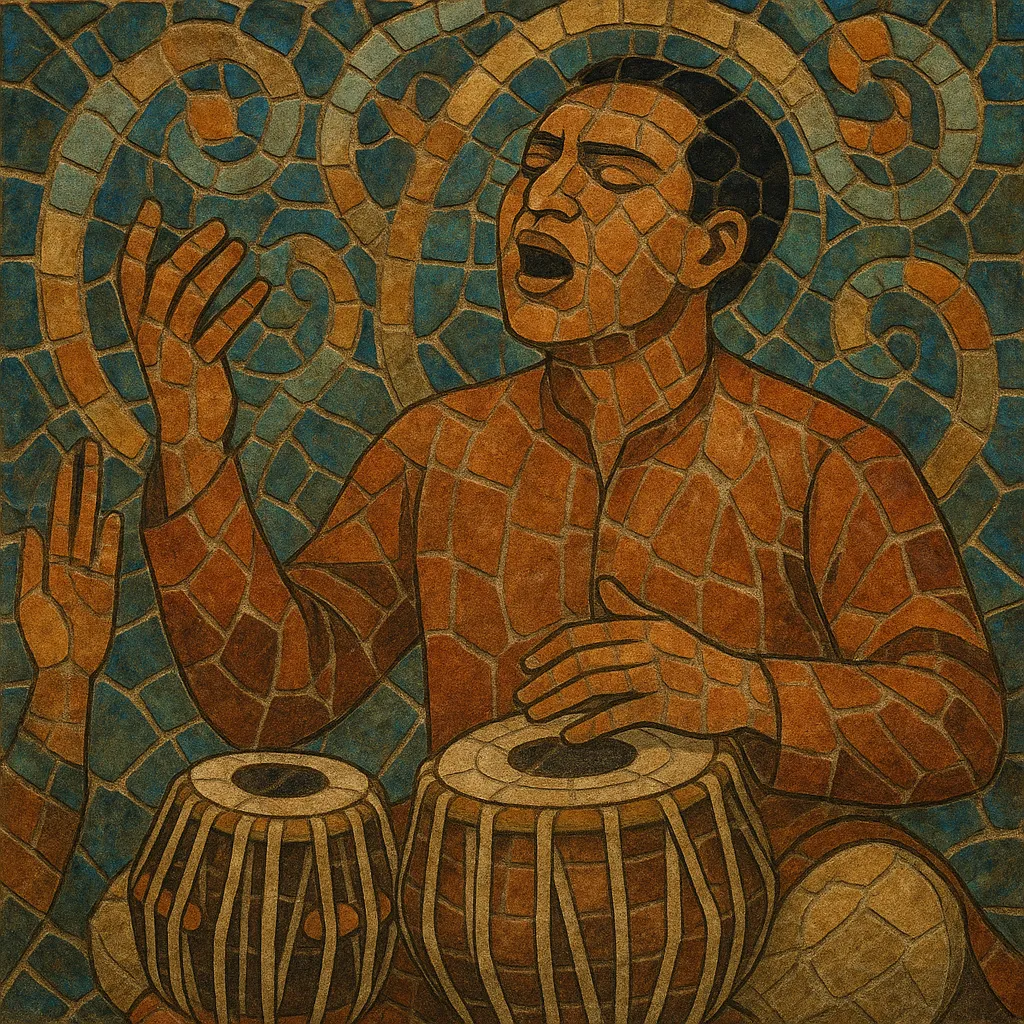Tarana is a brisk, syllabic vocal form of Hindustani classical music built on mnemonic, non-lexical syllables (such as "tanana", "dere na", "tadera", "yalali") that trace intricate melodic patterns and rhythmic designs. It is typically performed in a fast (drut) tempo, showcasing taans (rapid melodic runs), sargam (solfège), and bol-taans aligned tightly with the tala cycle.
A tarana composition (bandish) is set to a specific raga and tala, usually featuring a sthayi (lower-register section) and antara (upper-register section). While the syllables themselves carry no literal meaning, they function as musical material that mirrors percussion bols and enables virtuosic interplay between voice and tabla. Tarana often appears as a climactic or concluding item in concerts, highlighting agility, clarity of raga grammar, and rhythmic precision.
Tradition credits the genesis of tarana to the Sufi poet-musician Amir Khusrau (1253–1325) at the Delhi court. Drawing on Indo-Persian musical exchange, mnemonic syllables—akin to percussion bols—were adapted into a vocal vehicle that emphasized rhythmic vitality inside a raga framework. While documentary evidence from this period is sparse, later oral histories and gharana lore consistently link tarana’s seed-ideas to Khusrau’s milieu.
Tarana matured as khayal rose to prominence in the Mughal and princely-court era. The Gwalior, Agra, Kirana, Jaipur-Atrauli, and Patiala gharanas codified tarana bandishes, favored brisk tempos, and cultivated characteristic syllabic vocabularies. Performers used tarana as a compact, brilliant canvas to demonstrate raga grammar, layakari (rhythmic play), tihais (thrice-repeated cadences), and taans, often after a vilambit (slow) khayal.
Recordings by great maestros popularized tarana beyond court and salon, cementing it as a concert staple. The form also inspired related idioms: Carnatic tillana (with overlapping concept and function) and numerous film/"filmi" adaptations that quote tarana syllables for dramatic effect. Contemporary Hindustani vocalists and instrumentalists continue to perform tarana, sometimes experimenting with madhyalay (medium tempo), alternative talas (e.g., jhaptaal, ektaal), and fusion settings while retaining the essential raga-tala discipline.


